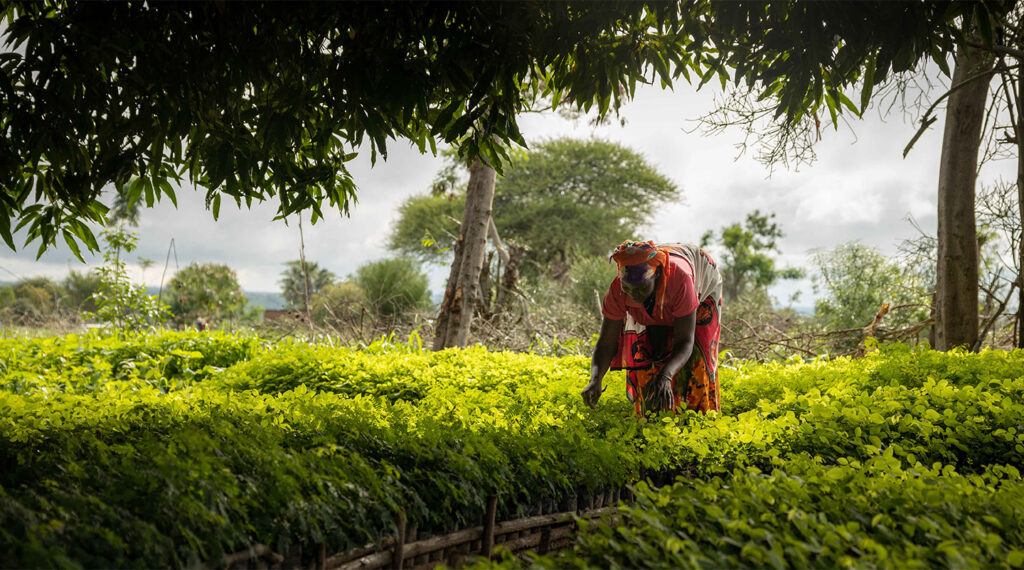Food 2.0+: Nourishing people on a warming planet

A fundamental question affecting all of humanity overshadows the constant news about political shifts and conflicts: How can we feed a growing global population on a planet likely to become 2°C warmer?
I’ll admit it: I’m a food nerd. My emphasis on the importance of the food system therefore may sound biased, but it stems from decades of work in sustainable agriculture and food system transformation across various regions. Over the years, I’ve seen just how deeply the way we grow and consume food affects everything from food security and public health to poverty, biodiversity and climate change. The good news is that if we get food systems right, we hold a powerful lever for achieving many sustainable development goals at once.
Yet a grim realisation is setting in: Humanity is unlikely to meet the 1.5°C global warming limit set in the Paris Agreement, and possibly not even stay within 2°C. This demands a serious re-evaluation of our future. Climate-induced food crises will become more frequent and severe, with far-reaching impacts on people and economies. Politicians understand this all too well; few things endanger public trust more than rising food prices and widespread hunger.
Climate change threatens food production
The science is unequivocal: Rising temperatures will make droughts and heavy rainfall more common and more intense across much of the world’s farmland. Both too little and too much water reduce crop productivity. Meanwhile, stressed plants become more vulnerable to pests and diseases, which thrive in warmer, wetter conditions. One lesser-known but critical impact is that heat waves during flowering can render many grain and pulse crops infertile, leading to steep yield losses.
Our dominant model of industrial agriculture – focused on economies of scale and global trade – has given rise to monocultures and market monopolies. This has made food systems brittle. When extreme weather strikes multiple regions at once, or in succession, the risk of acute food shortages spikes dramatically.
Pillars of resilience
There is no silver bullet to adjust the food system to climate change. Not biotechnology. Not lab-grown meat. Not digital farming. Not indoor vertical farms. While these tools may each play a role, what we really need is a deeper, systemic shift in how we think about and build food systems.
At the heart of this shift are three pillars of resilience: diversity, circularity and redundancy.
- Diverse cropping systems, whether through intercropping or rotations, reduce the risk of crop failure, support beneficial insects and suppress pests and diseases. They also shield producers from the effects of market fluctuations that are likely to become more frequent due to climate change.
- Closing nutrient loops by recycling organic matter and building healthy soils also improves water absorption in high rainfall incidences and water retention during drought periods. Farming practices that build soil organic matter even help sequester atmospheric carbon, offering a low-cost form of climate change mitigation.
- Decentralised food production and local marketing networks add redundancy and flexibility, helping food systems absorb shocks when some areas are hit hard.
Encouragingly, in recent years we’ve seen a surge of interest in regenerative and agroecological approaches that are built on these resilience pillars. Research institutions, farmer networks, governments, civil society and businesses are coming together to explore sustainable paths forward. The Agroecology Coalition, born out of the 2021 UN Food Systems Summit, now includes 52 national governments, three continental entities and over 300 organisations. But just as momentum builds, political instability and funding cuts are threatening this progress.
A critical role for philanthropy
This is where philanthropy becomes indispensable. Systemic change needs bold, catalytic investment, and when political will falls short, philanthropy must step in. Transforming food systems isn’t a simple, linear process; it requires experimentation, long-term vision and the courage to invest in high-impact, high-risk ideas. For example, to enable smallholders to invest in climate-resilient agroforestry systems or in efficient irrigation, to link them with urban consumers through a network of small and medium enterprises, or to shape food environments in a way that lets consumers choose healthy food from sustainable sources.
Philanthropic funders can help create an ecosystem of aligned efforts – organisations that share insights, learn from each other and together build the credibility and power needed to shape policy and drive transformation. One great example is the Global Alliance for the Future of Food, a network of foundations collaborating to advance food system transformation. Among its key initiatives is the Transformative Investing in Food Systems (TIFS) Initiative, which mobilises capital to scale regenerative and agroecological models. Through efforts like these, philanthropy can keep food system transformation on the global agenda and give it the attention it urgently deserves.
We may have just ten years left to learn how to nourish people on a warming planet before reaching the emergency stage. Let’s use that time wisely to assist local communities in getting prepared.
Authors

